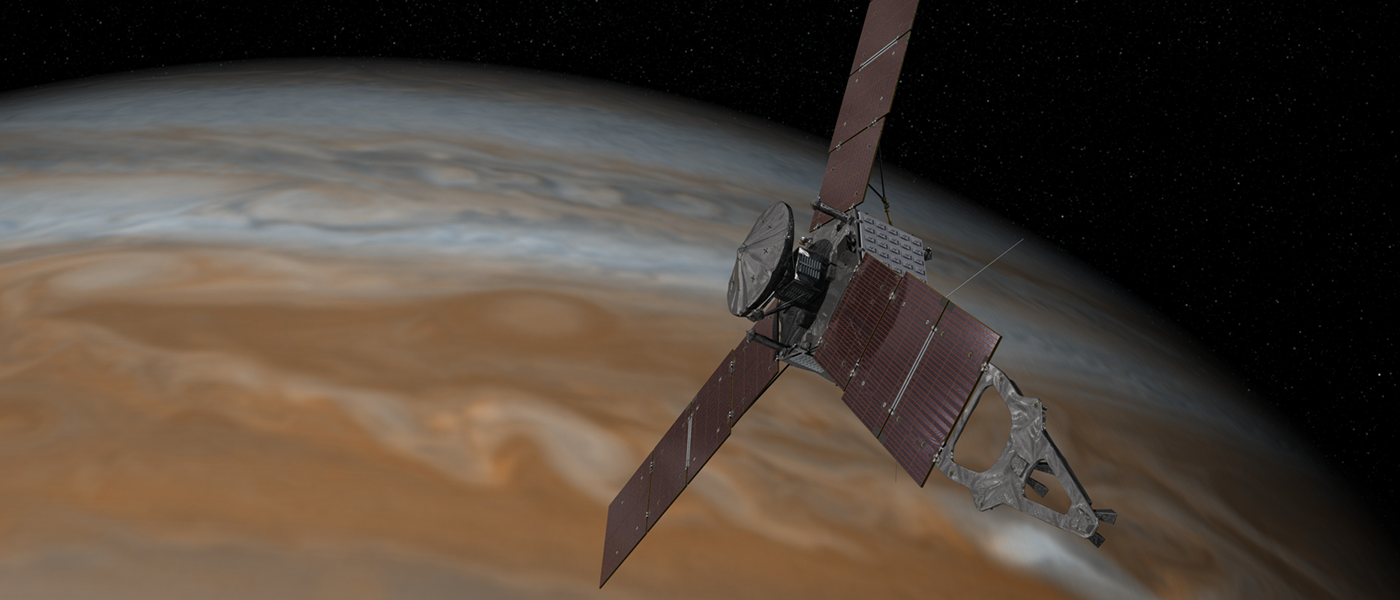Juno's Revelations
NASA's Juno spacecraft has just revealed a wealth of new information about our Solar System's biggest resident, Jupiter, and it's now clear that everything we thought we knew about the gas giant may have been wrong. The first observations were made when the spacecraft dipped closer to the tops of the clouds covering the planets' surface and passed over the poles.
“What we've learned so far is Earth-shattering. Or should I say, Jupiter-shattering,” Juno's principal investigator at the South Research Institute, Scott Bolton, said in a press release. “Discoveries about its composition, magnetosphere, and poles are as stunning as the photographs the mission is generating.”
At the planets' poles, there are massive, oval-shaped cyclones, completely different from the polar regions observed on Saturn. Some of these cyclones were observed to be so enormous that they approached widths of 1,400 kilometers (900 miles), making them 10 times larger than the most massive cyclones seen on Earth. These storms also soar so high that they were observed leaving Jupiter's atmosphere, extending almost 100 kilometers (62 miles) high.
Strange Surprises
The entire gaseous planet is enveloped by a powerful magnetic field, and solar winds cause the magnetosphere itself to expand and contract. Passing through the field, the spacecraft detected odd sounds. Jupiter is also home to strange northern lights totally different from those here on Earth.
Perhaps the strangest surprise was revealed beneath the planets' clouds, where Juno measured the atmospheres' thermal structure. The probe sent microwaves into the deep atmosphere and detected gigantic weather systems created by ammonia plumes emanating from the equator—a wider version of Earth's own trade winds.
Juno explored the Jovian magnetic field — the Solar System's largest object — in the second study. Although researchers knew the field was massive, they were surprised to learn that it is actually twice as powerful as predicted with previous models, 10 times more powerful than Earth's, and far more uneven and dynamic than before believed. And, while Earth's magnetic field originates from its core, Jupiter's varied, patchy magnetosphere may originate closer to its surface.
Our Mysterious Universe
The real purpose of the Juno mission has been to learn more about how the planets in our Solar System formed. This, in turn, can allow us to better understand how all planets form, and better comprehend the nature of the Universe. The craft is doing this by mapping the gas giant in detail and gathering data on the atmosphere, magnetic field, and inner structure of the massive planet.
Earth and Jupiter's different magnetospheres produce vastly different bow shock experiences as spacecraft pass through the magnetic fields. In fact, while passing through Earth's magnetic field is a uniform experience, passing through Jupiter's changes, depends on whether the magnetosphere is expanding or contracting in response to solar winds. Differences in the auroral emissions of the two planets are also striking.
Jupiter has more to tell us, and Juno is on the case. It has thus far completed only 5 of 33 planned flyby investigations, so we can expect more strange revelations. Next up, on July 11, Juno will pass over the Great Red Spot, and hopefully tell us more about the most famous storm in the Solar System — and perhaps about our Universe's origins as well.
Share This Article
